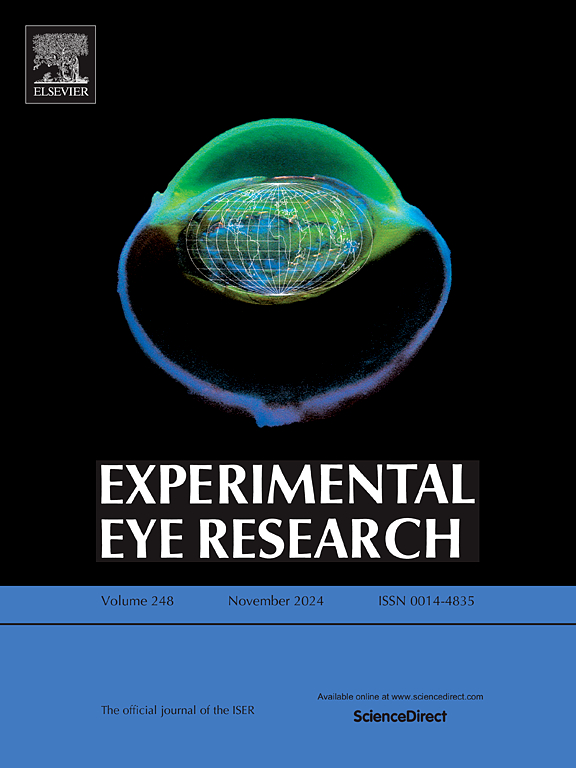在碘酸钠模型中,补体 C3 基因敲除可保护光感受器。
IF 3
2区 医学
Q1 OPHTHALMOLOGY
引用次数: 0
摘要
在遗传学、组织学和临床试验证据的支持下,补体因子 3(C3)已成为老年性黄斑变性(AMD)的主要治疗靶点。然而,其作用部位尚不明确。本研究的目的是测试碘酸钠(NaIO3)模型中 C3 基因敲除对光感受器和视网膜色素上皮细胞(RPE)的影响。C3-/- 和 WT 小鼠均以 C57Bl/6J 为背景,腹腔注射 25 mg/kg NaIO3。7 天后进行视网膜电图和光学相干断层扫描,分别评估视网膜功能和结构。然后安乐死小鼠,进行视网膜免疫组化、实时定量 PCR 和酶联免疫吸附试验。NaIO3 增加了神经视网膜中的 C3 蛋白水平,但没有增加 RPE。WT小鼠而非C3-/-小鼠表现出NaIO3诱导的iC3b沉积在感光体外节上。C3-/-小鼠对感光层变薄有部分保护作用。C3-/- 组小鼠的视杆细胞和视锥细胞功能得到部分保护。RPE的结构和功能均未受到保护。这些结果表明,在该模型中,外节疏松是导致光感受器死亡的原因之一,当RPE细胞受到压力时,靶向C3可以保护光感受器的结构和功能。本文章由计算机程序翻译,如有差异,请以英文原文为准。
Complement C3 knockout protects photoreceptors in the sodium iodate model
Complement factor 3 (C3) has emerged as a primary therapeutic target in age-related macular degeneration (AMD) supported by genetic, histologic, and clinical trial evidence. Yet, the site(s) of action are unclear. The purpose of this study was to test the effect of C3 knockout on photoreceptors and retinal pigment epithelial cells (RPE) in the sodium iodate (NaIO3) model, which mirrors some features of AMD. C3−/− and WT mice, both on a C57Bl/6J background, were injected intraperitoneally with 25 mg/kg NaIO3. Electroretinography and optical coherence tomography were performed 7 days later to assess retinal function and structure, respectively. Then, mice were euthanized for retinal immunohistochemistry, quantitative real-time PCR and enzyme-linked immunosorbent assays. NaIO3 increased C3 protein levels in the neural retina but not RPE. WT but not C3−/− mice showed NaIO3-induced iC3b deposition on photoreceptor outer segments. C3−/− mice were partially protected against photoreceptor layer thinning. There was partial preservation of rod and cone function in the C3−/− group. Neither RPE structure nor function was protected. These results suggest outer segment opsonization contributes to photoreceptor death in this model, and that targeting C3 can protect photoreceptor structure and function when RPE cells are stressed.
求助全文
通过发布文献求助,成功后即可免费获取论文全文。
去求助
来源期刊

Experimental eye research
医学-眼科学
CiteScore
6.80
自引率
5.90%
发文量
323
审稿时长
66 days
期刊介绍:
The primary goal of Experimental Eye Research is to publish original research papers on all aspects of experimental biology of the eye and ocular tissues that seek to define the mechanisms of normal function and/or disease. Studies of ocular tissues that encompass the disciplines of cell biology, developmental biology, genetics, molecular biology, physiology, biochemistry, biophysics, immunology or microbiology are most welcomed. Manuscripts that are purely clinical or in a surgical area of ophthalmology are not appropriate for submission to Experimental Eye Research and if received will be returned without review.
 求助内容:
求助内容: 应助结果提醒方式:
应助结果提醒方式:


